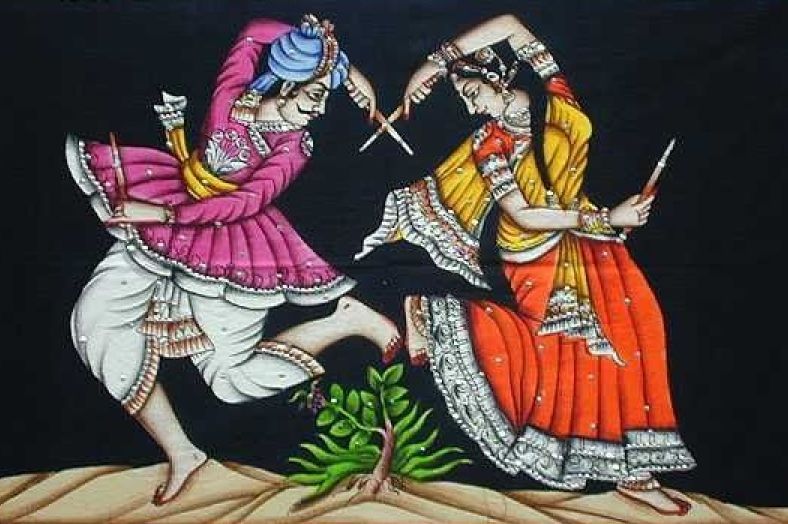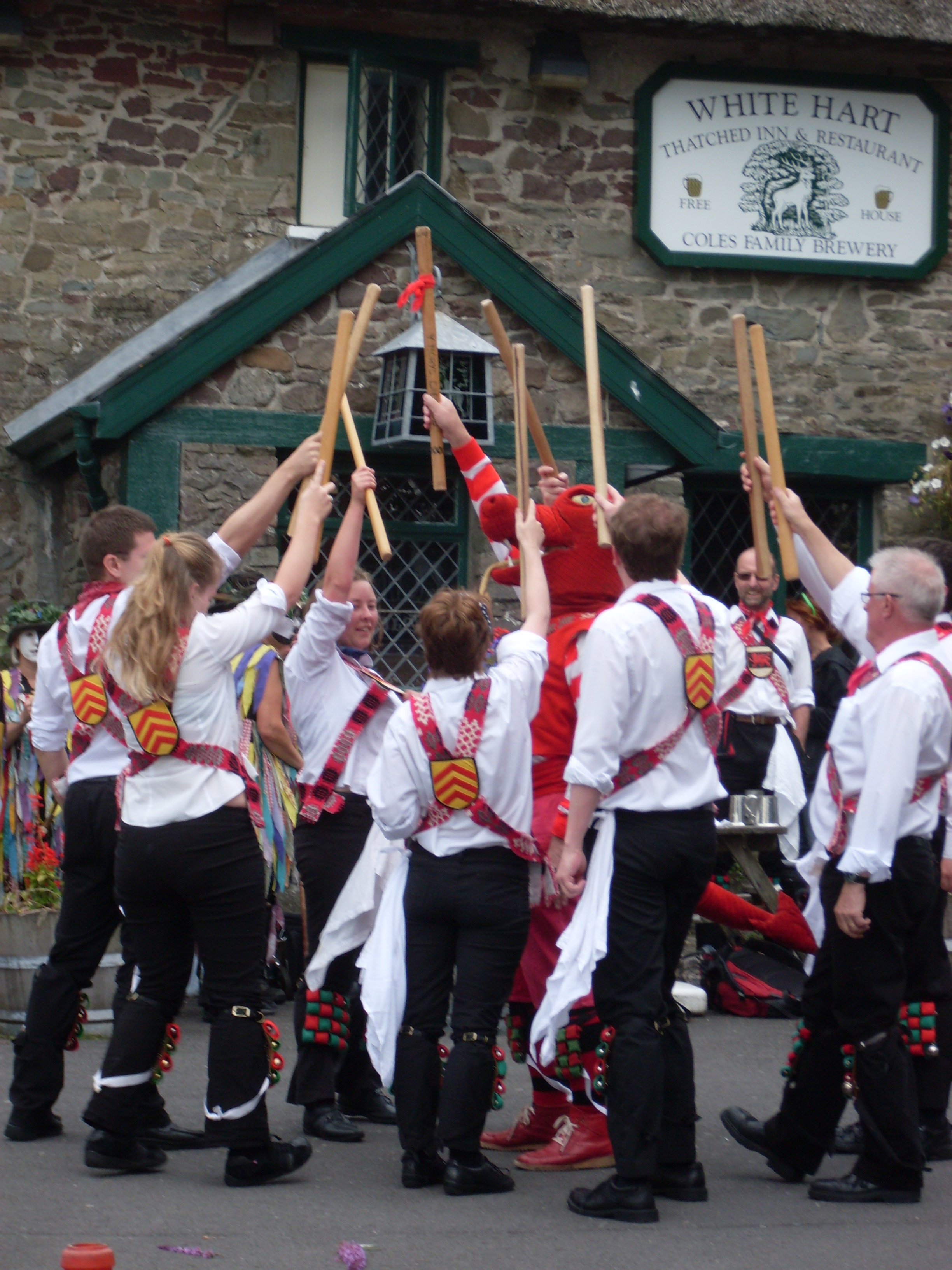|
Ball De Bastons
''Ball de bastons'' (, ''stick dance'') is the name of a ritual weapon dance spread throughout Europe and the rest of the Iberian area (''cossiers'' in Majorca, Portuguese ''pauliteiros'', Aragonese ''palotiau'', Basque ''ezpatadantza'' and Spanish ''paloteo'' or ''troqueado'') but mostly in Catalonia, Valencia, Aragón and Castilla y León where it is UNESCO heritage. English and Welsh Morris dances are well-known relatives to these traditions. The origins of dance are difficult to reference; first recorded mention dates to 1150, in a banquet of Count Berenguer IV) Most melodies are based on easy 2/4 rhythms. Instrumentarium includes tabor pipe, shawm or bagpipes Bagpipes are a woodwind instrument using enclosed reeds fed from a constant reservoir of air in the form of a bag. The Great Highland bagpipes are well known, but people have played bagpipes for centuries throughout large parts of Europe, N .... Some of these tunes as ''Villano de Zamora'' were strikingly ... [...More Info...] [...Related Items...] OR: [Wikipedia] [Google] [Baidu] |
Castilla Y León
Castile, Castille or Castilla may refer to: Places Spain * Castile (historical region), a vaguely defined historical region of Spain covering most of Castile and León, all of the Community of Madrid and most of Castilla–La Mancha * Kingdom of Castile, one of the medieval kingdoms of the Iberian peninsula, 1065–1230 * Crown of Castile, a medieval state in the Iberian Peninsula that formed in 1230 *Two regions of the Kingdom of Spain (until 1982): ** Old Castile, in the north ** New Castile (Spain), in the south *Two contemporary autonomous communities of Spain: ** Castile and León, in the north ** Castilla–La Mancha, in the south Elsewhere * Castile, New York * Castile (village), New York * Castilla District, Piura Province, Peru * Castilla de Oro, name given by Spanish in 16th century to Central American territories * Governorate of New Castile, modern Peru * Castilla, Sorsogon, municipality in Sorsogon, Philippines Other uses * Castile (surname) * Castilians, inhabit ... [...More Info...] [...Related Items...] OR: [Wikipedia] [Google] [Baidu] |
Catalan Folk Dances
Catalan may refer to: Catalonia From, or related to Catalonia: * Catalan language, a Romance language * Catalans, an ethnic group formed by the people from, or with origins in, Northern or southern Catalonia Places * 13178 Catalan, asteroid #13178, named "Catalan" * Catalán (crater), a lunar crater named for Miguel Ángel Catalán * Çatalan, İvrindi, a village in Balıkesir province, Turkey * Çatalan, Karaisalı, a village in Adana Province, Turkey * Catalan Bay, Gibraltar * Catalan Sea, more commonly known as the Balearic Sea * Catalan Mediterranean System, the Catalan Mountains Facilities and structures * Çatalan Bridge, Adana, Turkey * Çatalan Dam, Adana, Turkey * Catalan Batteries, Gibraltar People * Catalan, Lord of Monaco (1415–1457), Lord of Monaco from 1454 until 1457 * Alfredo Catalán (born 1968), Venezuelan politician * Alex Catalán (born 1968), Spanish filmmaker * Arnaut Catalan (1219–1253), troubador * Diego Catalán (1928–2008), Spanish philol ... [...More Info...] [...Related Items...] OR: [Wikipedia] [Google] [Baidu] |
Călușari
The Călușari (, ; ; singular: Călușar) are the participants to an old traditional Romanian dance known as the . "Căluș" translates to horse, but in an endearing form. Originally Romanian, the practice later spread to North Bulgaria. From three weeks after Easter until Pentecost, called in Romanian, for around two weeks they have traditionally travelled to all their local communities where they would dance, accompanied by a few fiddlers. History The origins of the Călușari are unknown, although the first written attestations are from the 17th-century musical notations of Ioan Căianu. Romanian historian of religion Mircea Eliade noted that "Although the oath taken is made in the name of God, the mythico-ritual scenario enacted by the calusari has nothing in common with Christianity" and that, in the 19th century at least, there was clerical opposition to the group, with its members being excluded from taking communion for three years in some regions. Etymology ... [...More Info...] [...Related Items...] OR: [Wikipedia] [Google] [Baidu] |
Dandiya Raas
Raas or Dandiya Raas is the socio-religious folk dance originating from Indian state of Gujarat and popularly performed in the festival of Navaratri. The dance is performed in the Marwar region of Rajasthan too. The etymology of Dandiya-Raas is in Sanskrit. Dandiya-raas exists in the different forms, including the collegiate competitive form. The dance style is now in a competitive format and a traditional format. Men and women traditionally play ''dandiya-raas'' and the dance operates in pairs, meaning the group must contain an even number. Generally, two lines are formed, with partners facing each other:The lines move clockwise, and each person steps forward to hit sticks with their partner, then moves on two people. At the end of the line, each turns and joins the line opposite, so the movement is continuous. The music starts very slowly ��It is an eight-beat time cycle called Kaherva and performed in the following manner: on the first beat, your own sticks are hit togeth ... [...More Info...] [...Related Items...] OR: [Wikipedia] [Google] [Baidu] |
Quercus Ilex
''Quercus ilex'', the holly oak, also (ambiguously, as many oaks are evergreen) evergreen oak, is a large evergreen oak native to the Mediterranean region. It is a member of the section (botany), section ''List of Quercus species#Section Ilex, Ilex'' of the genus, with acorns that mature in a single summer. Description It is a large evergreen tree, attaining in favourable places a height of , and developing in open situations a huge head of densely leafy branches as much across, the terminal portions of the branches often pendulous in old trees. The tallest recorded, a tree planted at Windsor Great Park, is 30.4 m tall. The trunk is sometimes over in girth. The young shoots are clothed with a close grey felt. The leaves are very variable in shape, most frequently leaf shape, narrowly oval or ovate-lanceolate, long (rarely to 10 cm long), 2–5 cm wide (rarely to 8 cm wide), rounded or broadly tapered at the base, pointed, the margins usually Glossary of botanical ... [...More Info...] [...Related Items...] OR: [Wikipedia] [Google] [Baidu] |
Bagpipes
Bagpipes are a woodwind instrument using enclosed reeds fed from a constant reservoir of air in the form of a bag. The Great Highland bagpipes are well known, but people have played bagpipes for centuries throughout large parts of Europe, Northern Africa, Western Asia, around the Persian Gulf and northern parts of South Asia. The term ''bagpipe'' is equally correct in the singular or the plural, though pipers usually refer to the bagpipes as "the pipes", "a set of pipes" or "a stand of pipes". Bagpipes are part of the aerophone group because to play the instrument you must blow air into it to produce a sound. Construction A set of bagpipes minimally consists of an air supply, a bag, a chanter, and usually at least one drone. Many bagpipes have more than one drone (and, sometimes, more than one chanter) in various combinations, held in place in stocks—sockets that fasten the various pipes to the bag. Air supply The most common method of supplying air to the b ... [...More Info...] [...Related Items...] OR: [Wikipedia] [Google] [Baidu] |
Shawm
The shawm () is a Bore (wind instruments)#Conical bore, conical bore, double-reed woodwind instrument made in Europe from the 13th or possibly 12th century to the present day. It achieved its peak of popularity during the medieval and Renaissance periods, after which it was gradually eclipsed by the oboe family of descendant instruments in classical music. It is likely to have come to Western Europe from the Eastern Mediterranean around the time of the Crusades.The Shawm and Curtal ��from the Diabolus in Musica Guide to Early Instruments Double-reed instruments similar to the shawm were long present in Southern Europe and the East, for instance the Ancient Greek music, ancient Greek, and later Byzantine Empire#Music, Byzantine aulos, the closely related sorna and zurna,A ... [...More Info...] [...Related Items...] OR: [Wikipedia] [Google] [Baidu] |
Tabor Pipe
The three-hole pipe, also commonly known as tabor pipe or galoubet, is a wind instrument designed to be played by one hand, leaving the other hand free to play a tabor drum, bell, psalterium or ''tambourin à cordes'', bones, triangle or other percussive instrument. The three-hole pipe's origins are not known, but it dates back at least to the 12th century. It was popular from an early date in France, the Iberian Peninsula and Great Britain and remains in use there today. ''txalaparta''). This three-hol ... * Zuffolo References External linksThe Taborers' Society by Sir Francis Darwin {{Authority control European musical instru ... [...More Info...] [...Related Items...] OR: [Wikipedia] [Google] [Baidu] |
Morris Dance
Morris dancing is a form of English folklore, English folk dance. It is based on rhythmic stepping and the execution of choreographed figures by a group of dancers in costume, usually wearing bell pads on their shins, their shoes or both. A band or single musician, also costumed, will accompany them. Sticks, swords, handkerchiefs, and a variety of other implements may be wielded by the dancers. Morris dancing first appeared in England in the Middle Ages, England in the 15th century. Its earliest surviving mention dates to 1448 and records the payment of seven shillings to Morris dancers by the Goldsmiths' Company in London. The term ''Morris'' derives from the Spanish language, Spanish term , although Morris dancing has no known historical connection to the Moors. Three prominent groups organise and support Morris in England: Morris Ring, Morris Federation and Open Morris; all three organisations have members from other countries as well. There are around 150 Morris sides (or ... [...More Info...] [...Related Items...] OR: [Wikipedia] [Google] [Baidu] |
Aragón
Aragon ( , ; Spanish and ; ) is an autonomous community in Spain, coextensive with the medieval Kingdom of Aragon. In northeastern Spain, the Aragonese autonomous community comprises three provinces (from north to south): Huesca, Zaragoza, and Teruel. Its capital is Zaragoza. The current Statute of Autonomy declares Aragon a '' historic nationality'' of Spain. Covering an area of , the region's terrain ranges diversely from permanent glaciers to verdant valleys, rich pasture lands and orchards, through to the arid steppes of the central lowlands. Aragon is home to many rivers—most notably, the river Ebro, Spain's largest river in volume, which runs west–east across the entire region through the province of Zaragoza. It is also home to the highest mountains of the Pyrenees. , the population of Aragon was 1,351,591, with slightly over half living in the capital city, Zaragoza. In 2023, the economy of Aragon generated a GDP of €46,674 million, which represents 3.1% of ... [...More Info...] [...Related Items...] OR: [Wikipedia] [Google] [Baidu] |
Ball Bastons
A ball is a round object (usually sphere, spherical, but sometimes ovoid) with several uses. It is used in ball games, where the play of the game follows the state of the ball as it is hit, kicked or thrown by players. Balls can also be used for simpler activities, such as catch or juggling. Balls made from hard-wearing materials are used in engineering applications to provide very low friction bearings, known as ball bearings. Black powder, Black-powder weapons use stone and metal balls as projectiles. Although many types of balls are today made from rubber, this form was unknown outside the Americas until after the voyages of Christopher Columbus, Columbus. The Spanish were the first Europeans to see the bouncing rubber balls (although solid and not inflated) which were employed most notably in the Mesoamerican ballgame. Balls used in various sports in other parts of the world prior to Columbus were made from other materials such as animal bladders or skins, stuffed with var ... [...More Info...] [...Related Items...] OR: [Wikipedia] [Google] [Baidu] |




